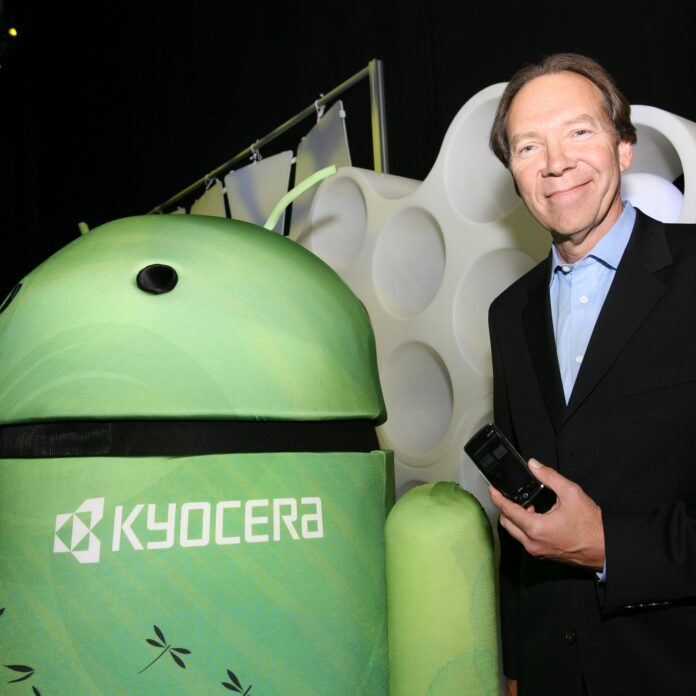Sprint has done a pretty good job in deflecting its current financial woes by highlighting the potential of its network assets. Sure, Sprint continues to under-perform in relation to its rivals, both larger and smaller, but the promise of what Sprint can do with its spectrum assets once it gains its footing has left most salivating.
Sprint, for its part, has helped feed this focus with its executives repeatedly warning that the carrier would continue to see challenged operations through at least the end of the year.
That was apparent again this week as despite yet another quarter of troubled operating results, investors continue to focus on the future for Sprint. During the quarterly conference call Sprint had with financial analysts following the release of its third quarter results, network potential remained the hottest topic.
In providing more details on its plans, Sprint was most pressed to provide insight into its plans for the 2.5 GHz spectrum holdings it gained full control over following its acquisition of Clearwire in July. Most of those questions involved Sprint’s plans to expand the reach of the TDD-LTE network powered by the 2.5 GHz spectrum, which was a major point of its Spark network program.
Steve Elfman, president of network operations at Sprint, explained that the carrier’s initial 2.5 GHz plans would be similar to what Clearwire was doing with that spectrum in deploying services across dense, urban markets where capacity might be needed. However, Elfman added that in the long term Sprint would involve that spectrum in its nationwide build as well.
That could prove to be a bit of a challenge from a coverage standpoint due to the limited propagation characteristics of the 2.5 GHz band, which would require Sprint to install a considerable number of new sites in order to expand coverage to match the LTE plans of its 1.9 GHz and 800 MHz spectrum. Sprint remained a bit coy as to whether it would actually look at network parity with 2.5 GHz spectrum, or if instead it just planned to have 2.5 GHz spectrum emanating from all of its LTE-equipped towers.
Sprint CEO Dan Hesse did hint to as much, noting “it will take some time for the 2.5 [GHz] pop coverage to catch up to the pop coverage of, let’s say 1.9 [GHz].”
Elfman did say that 26,000 of the carrier’s more than 55,000 total sites had been upgraded as part of its Network Vision initiative, with more than 35,000 sites at more than 90% completion. Those plans include the addition of 800 MHz spectrum freed up from the iDEN shut down to bolster CDMA voice coverage, with Elfman stating that sites in approximately two-thirds of its markets were now supporting 800 MHz voice and that 40% of its postpaid customer base had devices capable of tapping into that service.
Sprint is also beginning to turn on LTE support in the 800 MHz band, which was also a key tenant to its Spark program.
Churn, marketing plans
As for its current issues, Hesse acknowledged that the hangover from shutting down its iDEN network impacted customer churn results for its legacy CDMA services as many of those iDEN customers that remained until the bitter end where also signed up for the carrier’s CDMA service. That impact is expected to lessen moving into the current fourth quarter, but will still result in continued “elevated levels” of churn.
“If we lost the account, Nextel or iDEN customers came off in June and then the Sprint customers come up in the second half, both Q3 and Q4,” explained Hesse. “The impact on the third quarter was quite significant.”
Sprint is also still attempting to transition customers to its network following the recent acquisition of assets from U.S. Cellular. Sprint CTO Joe Euteneuer said the carrier had transitioned 32,000 customers from U.S. Cellular during the third quarter, with approximately 84,000 customers remaining on the legacy network.
“We will continue to work to recapture these customers in the coming months and we expect this effort to be largely complete by year end,” Euteneuer explained.
The U.S. Cellular deal initially involved approximately 585,000 customers when announced late last year, but was downgraded to just 420,000 subscribers when it closed during the second quarter. Sprint counted 411,000 net customer additions during the second quarter tied to the U.S. Cellular deal.
As part of those retention efforts, Hesse said Sprint would continue to focus on three points in its marketing efforts: the One Up device financing and $65 price point; its “unlimited-for-life” offer; and touting its network upgrades in markets that have been impacted by the ongoing constructing process.
These efforts would seem to mimic those of T-Mobile US, which has focused its marketing efforts on recent rate plan changed tied to its “Un-carrier” initiative, while larger rivals Verizon Wireless and AT&T Mobility focus on LTE speeds and coverage.
With the infusion of cash following Softbank’s $21.8 billion investment into Sprint and its now full control over Clearwire’s 2.5 GHz spectrum holdings, Sprint’s ability to keep investors looking to the future could begin to fade as at some point the future will need to become reality.
Bored? Why not follow me on Twitter?

